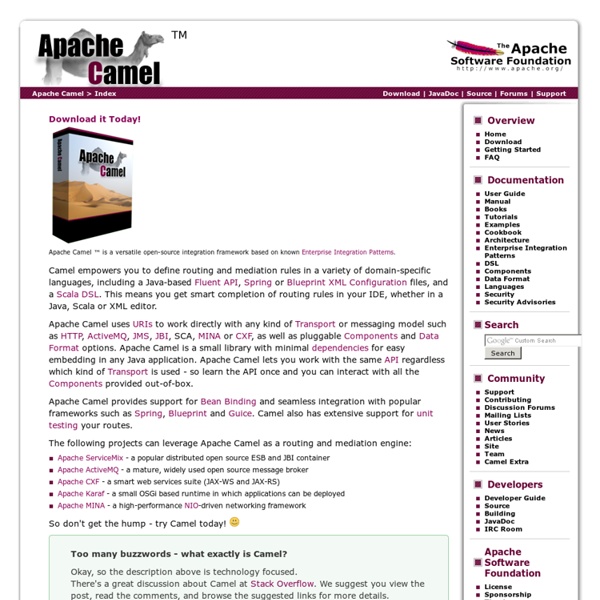



CXF MQTT: MQ Telemetry Transport JBoss Fuse - Overview JBoss Fuse is an open source, lightweight and modular integration platform with a new-style Enterprise Service Bus (ESB) that supports integration beyond the data center. The capability to connect all enterprise assets and the ability to deploy JBoss Fuse in several different configurations advances intelligent integration to all facets of your business – on premise or in the Cloud. JBoss Fuse for xPaaS extends the integration capabilities to OpenShift Platform-as-a-Service (PaaS) solution. Pattern based Integration framework Leverage Apache Camel to provide a full-featured, easy-to-use and intuitive framework for quicker integration solutions. Dynamic configuration and management Change configuration while container is running. Multiple connectivity options Connect to external applications with connectors for JDBC, FTP/SFTP, HTTP/HTTPS, file, SalesForce.com, SAP, Twitter, and more. Fabric Management Console is based on the hawtio web console. New Features Try the exciting new features: Buzz
Apache Synapse - The Lightweight ESB Spring OASIS Message Queuing Telemetry Transport (MQTT Providing a lightweight publish/subscribe reliable messaging transport protocol suitable for communication in M2M/IoT contexts where a small code footprint is required and/or network bandwidth is at a premium. Richard Coppen, coppen@uk.ibm.com, ChairRaphael Cohn, raphael.cohn@stormmq.com, ChairGeoff Brown, geoff.brown@m2mi.com, Secretary Table of Contents TC Update MQTT 3.1.1 becomes an OASIS Standard Read the OASIS announcement here. Announcements Track MQTT-related news with interoperate, a weekly curated newsletter covering IoT and M2M standards. The Eclipse Foundation Paho Project hosted an MQTT Interop Testing Day on 17 March 2014 in Burlingame, CA. Participation in the OASIS MQTT TC is open to all interested parties. Overview For more information on the MQTT TC, see the TC Charter. Subcommittees MQTT Security Subcommittee TC Liaisons No TC Liaisons have been announced for this TC. TC Tools and Approved Publications Technical Work Produced by the Committee MQTT Version 3.1.1 (Standards Track)
Service Design Patterns: Fundamental Design Solutions for SOAP/WSDL and ... - Robert Daigneau MuleSoft | Integration Platform for Connecting SaaS and Enterprise Applications XFire Reading configuration files with libconfig libconfig may be yet another configuration library, but I gave it a once- over anyway, and it is good. libconfig calls itself "a simple library for processing structured configuration files", with a "file format which is much more readable than XML". The file format really is readable, as the following short example shows: # authenticator name = "JP"; enabled = false; length = 186; ldap = { host = "ldap.example.com"; base = "ou=usr,o=example.com"; /* adapt this */ retries = [10, 15, 20, 60]; // Use more than 2 }; Comments within the configuration file can be placed anywhere, and libconfig knows three comment formats: a hash (#) as in the UNIX shells, the double slash (//) and the C-style /* ... */. libconfig knows about scalar values (integer, 64-bit integer, floating point, boolean and string), arrays of scalar values of the same type, so- called groups (collections of settings), and lists, which are sequences of values of any type, including lists. Somewhat related: Lua
Patterns of Enterprise Application Architecture - Martin Fowler